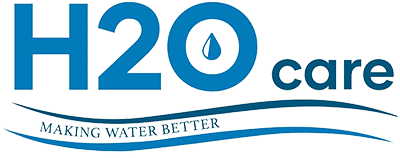Carbon Filtration

Carbon Cartridge Filters
Carbon Filtration
Carbon filtration is used to help remove common chemicals such as chlorine, chloramine, pesticides, and herbicides from your water supply. Chlorine and chloramine are commonly used by municipal water suppliers to disinfect water against harmful bacteria, a very important function. However, this process leaves behind chemicals and in turn, creates water that can smell and taste bad. A carbon filter will reduce these unwanted tastes and odors.
How do carbon filters work?
Carbon filters work through a process called adsorption, not to be confused with absorption. Water flows through carbon, forcing contaminants into open pores in the carbon creating a bond with unwanted chemicals. This prevents the flow through to your water supply. These filters must be periodically changed out as they will eventually reach a maximum capacity.

What are the different types of carbon filters?
While there are several different methods of carbon filtration, carbon filters often fall into one of three categories: granular activated carbon filters (GAC), carbon block filters, and radial flow GAC filters. All these filters are made up of finely ground carbon that has been treated with very high temperatures This process creates many pores of “activated carbon,” which greatly increases the surface area of the filter for greater adsorption. The raw material used in this process is typically coal, coconut shell or other organic materials. Some people refer to these as charcoal filters.
As the name suggests, granular activated carbon filters are made up of individual granules providing an easy channel for filtration. These filters excel in providing a high flow rate while maintaining adequate filtration.
Carbon block filters are a more dense form of activated carbon. The granular carbon is compressed to form a solid, porous piece of carbon. This creates more contact time and allows for higher removal capacity as the water has much more surface area to funnel through, but the flow may be more restricted than a GAC filter.
Lastly, radial flow GAC filters combine the advantages of the GAC and block filter, creating a product that has a large capacity along with a high flow potential.
Your water treatment professional can determine your best option.
Catalytic carbon for chloramine treated water supplies
Some public water supplies utilize chloramine instead of chlorine as a disinfectant in their treatment facility. Harmful byproducts may be created by chlorinating surface water supplies that have organic material in them. The chlorine reacts and has been found to create the contaminant, Trihalomethanes. (see https://h2ocare.com/trihalomethanes-in-water/) Chloramine is a combination of chlorine and ammonia. It does not create this byproduct and is EPA approved. For more on Chloramines, see our published article at https://www.wqpmag.com/water-disinfection/article/10958745/chloramine-control. To remove chloramine from your water supply, you will need “Catalytic carbon”.
The difference between activated carbon and catalytic carbon is an additional treatment process the activated carbon undergoes. Catalytic carbon goes through the activation process but is treated again to become a catalyst (a substance that increases the rate of a chemical reaction without itself undergoing any permanent chemical change). This additional step allows carbon to bond with chloramine and removes it from your water supply. Non-catalytic carbon does not have the same bonding properties for this purpose and will allow chloramine to pass through uninterrupted.
What else do carbon filters remove?
The main purpose of these filters is to reduce common chemicals (listed below), bad taste & odors in your drinking water. Depending on the type, size, and certification of the filter, more contaminants such as lead, iron, and bacteria may also be removed.
- Volatile organic compounds (see https://www.epa.gov/indoor-air-quality-iaq/what-are-volatile-organic-compounds-vocs)
- Herbicides
- Solvents – degreasers, cleaning agents
- Gasoline compounds
- Pesticides
- Lead, Iron, and other heavy metals (Only if the filter is certified for these)
These filters do not reduce all contaminants. Dissolved minerals like iron, manganese, and the hardness minerals (calcium and magnesium), for example, will remain unchanged in solution. The smaller the micron rating of the pore size of the filter, the more contaminants will be removed, however, choosing too small a micron rating may cause water pressure issues. Speak to your water treatment professional about which filter is right for your situation.
Where should I install my carbon filter?
These filters are typically installed either at the point-of-entry (POE) in the home or business or at a specific point-of-use (POU). POE allows you to cover the entire in-coming water supply. Point-of-use is focused on one source, for example, the kitchen sink faucet. This enables the user to target a specific problem location. If you are looking to eliminate chlorine from all your water-using applications (like your shower or bathtub), a whole-house carbon filtration installation is required.
Choosing between POE or POU depends on how you plan to use your system and what other systems you have in place. If you are using a water softener on a chlorinated water supply, it is recommended to place your carbon filter before the water softener for better results and to protect the softener resin
Understanding which filter meets your needs
While carbon water filters are effective, they are not recommended in every scenario. Understanding the total water chemistry and water quality issues are paramount to forming the best solution. Also, carbon can be installed in a larger tank for much larger volumes of water at the point of entry. This eliminates the more frequent cartridge change-outs. However, the carbon media inside the tank needs to be changed out periodically as well, although over a much longer period of time, years perhaps.

Point of Entry Large
Capacity Carbon Filtration
